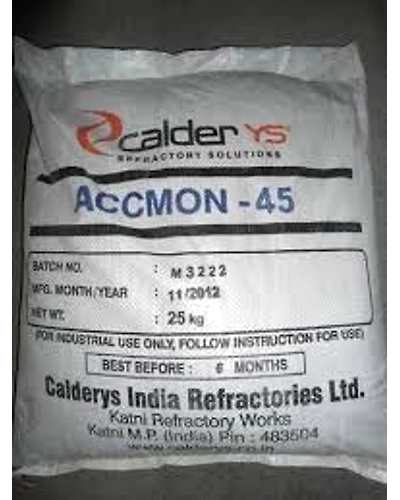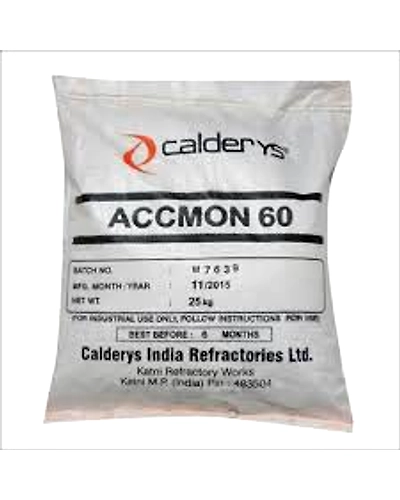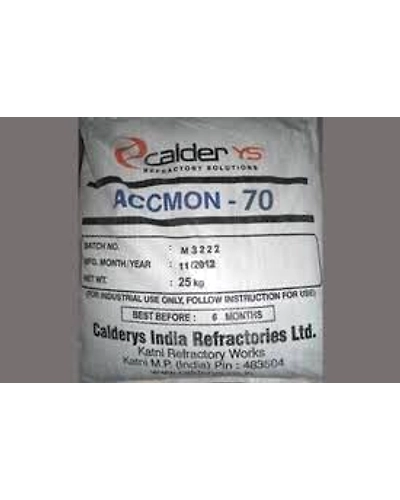LOW CEMENT CASTABLES
570.00
/ MT (Metric Tons)Inclusive of all taxes
-
Product is not available
-
| Brand | Caldery's |
| ITC-HSN: | 38160000 |
| Availability | In Stock |
| Minimum Order Quantity: | 6000 |
| Accept Small Orders | Yes |
| Fulfilment Capacity (Per Month): | 12000 |
| Country Of Origin : | India |
ACCMON 80 is a high alumina, low cement castable refractory material commonly used in various industrial applications, particularly in steel and metal-related industries. It's known for its low cement content, which leads to shorter installation times and enhanced properties like high strength and durability.
Low Cement Content: This reduces water demand, leading to quicker installation and hardening.
High Alumina Content: Provides good strength and resistance to high temperatures.
High Density: Ensures good load-bearing capacity.
Good Resistance to Thermal Shock and Abrasion: Suitable for environments with fluctuating temperatures and wear
Low cement" typically refers to materials like castables or concretes that use a reduced amount of cement binder compared to traditional materials. This reduction in cement is often done to improve certain properties, like higher temperature resistance or to minimize the amount of cement needed for specific applications.
-
Additional Information
Low-Cement Castables:
These are refractory castables (materials used for furnace lining) that utilize a lower percentage of cement (around 5% or even 1-2%) compared to standard castables (15-20%). The purpose is to improve their refractory properties, such as thermal shock resistance and slag resistance, according to Made-in-China.com.
Low-Heat Cement:
This type of cement is specifically designed to generate less heat during the hydration process (the chemical reaction with water). This is achieved by modifying the chemical composition to reduce the amount of C3S (tricalcium silicate), a compound that contributes significantly to heat generation, and increase the amount of C2S (dicalcium silicate).
Low-Alkali Cement:
This refers to Portland cement with a limited alkali content (alkalies refer to sodium and potassium oxides). It's used in situations where alkali-aggregate reactions (reactions between cement and certain aggregates) are a concern, as these reactions can cause concrete to expand and crack.
Low-Clinker Cement:
These cements utilize a portion of a cementitious material (like fly ash or slag) to substitute the clinker (the main component of Portland cement). This substitution reduces the carbon dioxide emissions associated with cement production.
-
Reviews ()
Write a Review









